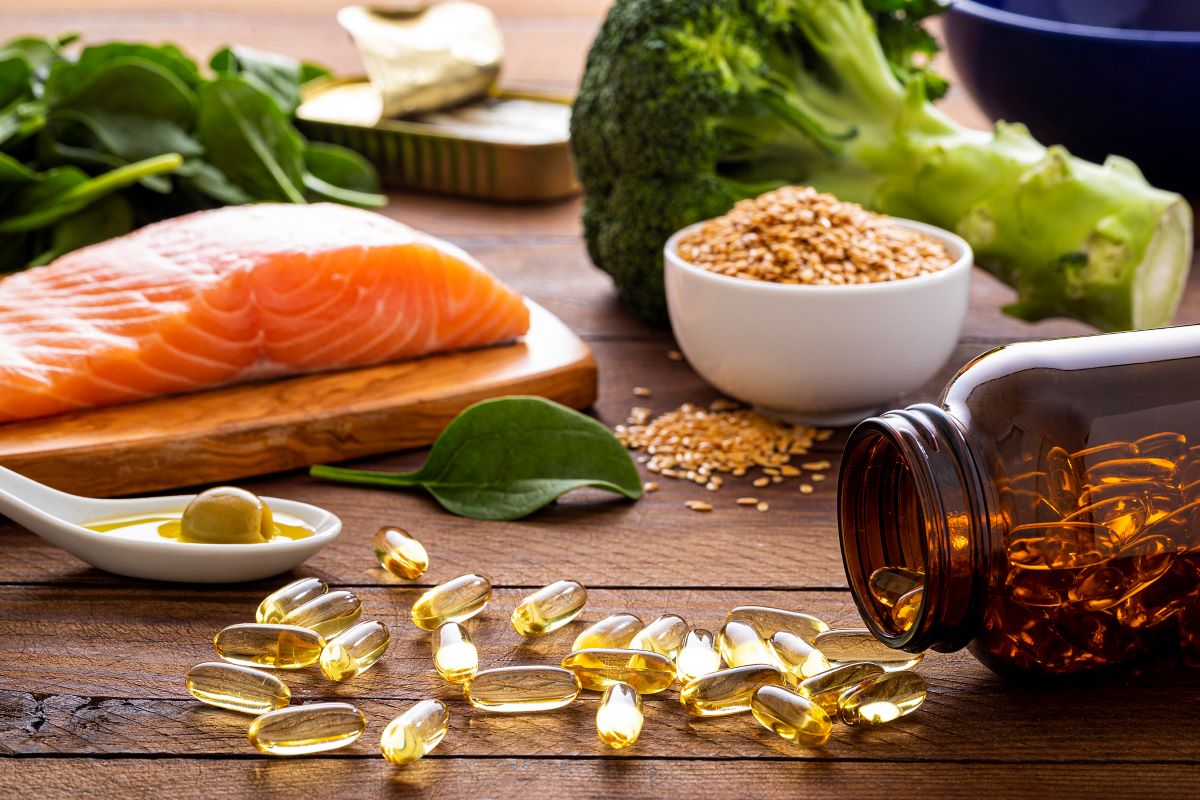
We hear about omega-3s every day, whether in commercials or the news. Omega-3s are essential fatty acids that our bodies can’t produce. So, we have to get them from food that we eat or from supplements.
Omega-3s are broken down into alpha-linolenic acid (ALA), elcosapentaenoic acid (EPA) and docosahexaenoic acid (DHA).
- ALA is the plant form of omega-3s and is found in flaxseed, chia seeds, walnuts, canola oil and soybean oil.
- EPA and DHA are marine sources of omega-3s and are found in fatty fish such as the SMASH (salmon, mackerel, anchovies, sardines and herring) fish and are high in omega-3s but low in mercury. The American Heart Association recommends two servings of seafood weekly to reduce the risk of cardiovascular disease. The recommendation of the 2020-2025 Dietary Guidelines for Americans is to consume at least 8 ounces of seafood weekly to obtain the necessary omega-3s.
Omega-3s have anti-inflammatory properties. They help with blood clotting, may reduce the risk of heart attack and stroke, improve cholesterol levels by increasing HDL (high-density lipoprotein), decrease triglyceride levels, lower blood pressure and decrease the risk of certain cancers. Omega-3s also can strengthen immune cells and appear promising for maintaining lung health.
Increasing the amount of omega-3s we get in our diet is important for the health benefits they provide. The omega-3s with the most powerful impact on our health are DHA and EPA, found in marine sources. DHA and EPA can be made from ALA (the plant source of omega-3s), but the conversion rate is only about 15%. So, it’s better to get DHA and EPA from fatty fish. For example, trout and Atlantic salmon provide over 1000 milligrams of omega-3s per 4-ounce cooked portion. Additional information can be found at seafoodnutrition.org, which includes a chart on which fish are the richest in omega-3s. Algae and seaweed are sources of DHA and EPA for those on a vegetarian or vegan diet. The plant foods that contain both DHA and EPA include nori, dried seaweed, chlorella and spirulina.
There are many ways to increase fish and seafood intake in your diet, including:
- Use canned salmon, sardines or mackerel as a sandwich filling.
- Add fish to a salad. Grilled salmon and pineapple would be a great choice.
- Spread smoked salmon or mackerel eggs on whole wheat bagels.
- Use fish instead of meat for meals. Examples include using salmon on skewers, fish burgers, fish with pasta or fish tacos.
- Use frozen fish as an easy option.
Food is always the best option to get your omega-3s. However, if you can’t tolerate fish, another option would be a fish oil supplement. Any supplement must contain DHA and EPA to provide the most impact on your health. Talk with your doctor before starting a fish oil supplement.
We are learning more about the health benefits of omega-3s all the time. To gain all the benefits of omega-3s, aim to eat fish at least twice a week. The very healthy and anti-inflammatory properties of the Mediterranean diet are based on the idea that seafood is a great source of protein. Overall, omega-3s are a great way to improve your health.
Find more healthy eating tips from Northside Hospital Nutrition Services.
References:
- Everyday Health. "Everything You Need to Know About Omega-3s." Accessed September 20, 2024. https://www.everydayhealth.com/diet-nutrition/omega-3s/.
- Medical News Today. "The Complete Guide to Omega-3 Rich Foods." Accessed September 20, 2024. https://www.medicalnewstoday.com/articles/323144.
- Ask the Scientists. "A Deep Dive into Omega-3s and Omega-6 Essential Fatty Acids." Accessed September 20, 2024. https://askthescientists.com/essential-fatty-acids/.

